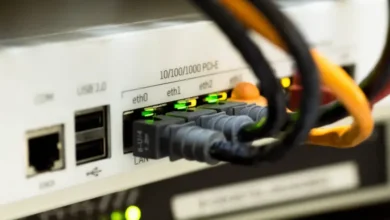How to catch C# Exceptions in visual Studio
Introduction of Visual Studio
Two past models showed you how to get starting growing and debugging .NET Core apps utilizing Visual Studio Code. This guide will cover examining your apps.
Even if an app throws no exceptions, it could still have errors. Testing is planning to highlight these bugs by creating a logical bug in your coding.
Forrest Gump is a fabulous movie, possibly one of the best films to come out in the 1990s. If you haven’t observed it, I’m okay with checking reading this post right now and maintaining to watch the movie. At one point in the film, the titular character is spattering with mud. When asked about it, he says, “Shit happens.” HireAsp.Net Provide Best .Net Web Application development Services in USA. That is true for our computer programs, too. When something goes wrong, we want to manage it as best we can. Ideally, there is some balancing procedure that can be taken: rolling back a transaction, retrying a request, using a complex strategy.
To communicate to a caller that its application has failed, we use a construct called an exception. When throwing an exception, execution in this block is immediately halted, and the exception is rising to the containing block. If that block carries a matching catch, then that manages the exception. If not – the exception extends to froth up.
When exceptions are first thrown, they are recognized as first chance differences. By default, the Visual Studio debugger won’t break on first chance exceptions if controlled by a catch block.
If the exception is thrown in the catch block, they become known as second chance differences, and these will cause the debugger to break. Now Day We is Hiring Best Dedicated Hire Asp.Net MVC Developer and Hire VB.Net Developer in USA
It is reasonable to have Visual Studio break on first possibility exceptions – by modifying the exception settings. In this dialog, the exception type can be filtering to limit you to just breaking on abnormalities pertinent to your situation.
The Exception Settings dialog
It is reasonable to select all the CLR exception types, but frequently, the First chance exceptions are throw and correctly handle the code in the BCL and will add a vast deal of noise. By default, VS breaks only on exceptions in your coding.
If a first-chance exception is thrown and caught in library code or BCL code, it’s neglected. You can configure Visual Studio in high-level outlines to break on all exceptions in Tools | Debugging | Enable Just My Code.
At the Breakpoint
Once Visual Studio is arrest at a breakpoint, you can crowd around at the code to your core content. All variables’ present values can sometimes show just by hovering over the variables with your pointer. You might want to use the quick watch dialog or even the watch list for more in-depth investigations.
Call Stack
Another useful dialog is the call stack dialog, which determines where you are inside the form. If you think of each function call as the layers of an onion – the call stack allows you to hop approximately between the various layers of the onion. You can now step back through the call stack and find the code which was performing wrong.
That does not allow you to hop around inside the debugger to look at the exception’s context, but when you’re viewing logs from the product – a stack trace is likely all you have. Hire Asp.Net Developer and Hire Asp.Net MVC Developer in USA.
The lack of detailed information from production is one reason I’m so big on putting in place extensive logging. You’ll rarely find you have too many log comments, but if you have too few, it makes diagnosing a problem without redeploying with logging differences.




